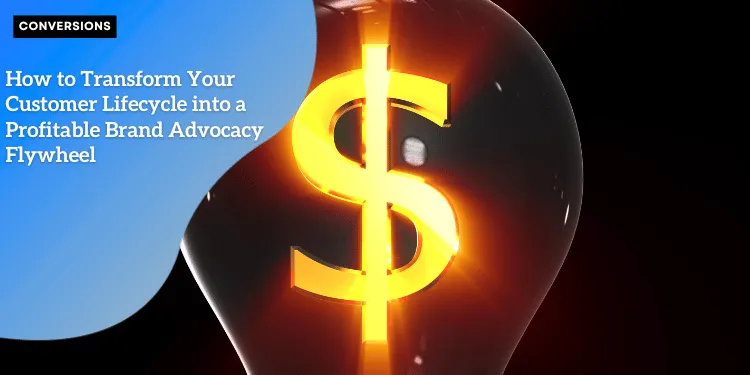Como transformar o ciclo de vida do seu cliente em um volante lucrativo de defesa da marca

Anúncios
The ecommerce customer lifecycle is traditionally broken down into five key stages: Engage, Acquire, Nurture, Retain, and Encourage Advocacy.
Each stage is crucial for guiding customers from the early awareness of your brand to becoming loyal advocates.
The Five Key Stages
| Stage | Description |
|---|---|
| 🔍 Engage | This is where potential customers first learn about your brand. Engaging activities can include social media marketing, content creation, and targeted advertisements. |
| 💸 Acquire | Once customers are aware of your brand, the goal is to convert them into paying customers. This involves optimizing your website, providing compelling offers, and simplifying the checkout process. |
| 💌 Nurture | After the initial purchase, it’s essential to continue engaging with customers to build a lasting relationship. This can be done through follow-up emails, personalized recommendations, and exceptional customer service. |
| 🔁 Retain | Keeping customers coming back is vital for sustained business growth. Loyalty programs, exclusive offers, and consistent quality service help in maintaining customer interest. |
| 🌟 Encourage Advocacy | The final stage is to turn satisfied customers into brand advocates who will promote your brand through word-of-mouth, reviews, and referrals. |
Limitations of Focusing Solely on Acquisition and Engagement
Many ecommerce marketers tend to focus predominantly on the Engage and Acquire stages.
While engaging new customers and converting them to make purchases are critical activities, they can be resource-intensive.
Anúncios
Constantly investing in ads and marketing campaigns to bring in new customers can quickly become expensive and unsustainable in the long run.
The Drawbacks of a Linear Approach
Traditional linear approaches to the customer lifecycle typically involve a significant upfront cost associated with paid acquisition strategies.
These approaches often miss out on the potential for creating a self-sustaining cycle where existing customers help attract new ones.
Anúncios
As a result, the need for continuous and often expensive advertising remains, making it difficult to reduce acquisition costs over time.
Instead, by viewing the customer lifecycle as a more holistic and repeatable process, businesses can create a cycle where brand advocacy plays a significant role.
This transition paves the way for the advantages detailed in the next part of the model, emphasizing the importance of transforming customers into natural marketers for your brand.
The Brand Advocacy Flywheel Model
The Brand Advocacy Flywheel Model differentiates itself from the traditional customer lifecycle by introducing a continuous, self-sustaining cycle of customer interaction and growth.
Unlike a linear process, which can come to a halt, the flywheel thrives on momentum and constant improvement.
The Virtuous Cycle of the Flywheel
When we discuss the flywheel, we’re talking about a continuous loop where each step reinforces the next.
In a traditional model, the customer journey ends post-purchase with retention and advocacy being often neglected.
However, in the flywheel model, every step—Engage, Acquire, Nurture, Retain, Encourage Advocacy—feeds into the next, creating a perpetual cycle.
At the heart of the flywheel is the transformation of customers into brand advocates.
These advocates don’t just complete their purchase and disappear; they return, bringing new customers along with them.
 Lucrative
Lucrative
Reinforcing Loop Effect on Customer Acquisition
One of the most compelling aspects of the flywheel is its cost-effectiveness.
As customers become advocates, they naturally generate more new customers through word-of-mouth, referrals, and organic reviews.
This significantly reduces the expenditure on traditional paid acquisition methods.
Imagine each advocate bringing in a new customer—over time, the compound effect can result in exponential growth.
This cycle is continuously reinforced as more advocates at the Encourage Advocacy stage lead to more engagements at the Engage stage, creating a self-sustaining loop.
Customers as Natural Marketers
Shoppers who have a positive experience and turn into advocates essentially become natural marketers for your brand.
They share their experiences via social media, reviews, and direct recommendations.
This form of marketing is not only authentic but also highly trusted by potential customers.
Advocacy bridges the gap between traditional marketing and modern consumer behavior where people trust people more than they trust brands.
By focusing on turning satisfied customers into advocates, the flywheel leverages the organic growth potential inherent in positive customer experiences.
With a strong foundation in the flywheel concept, let’s consider how to create smooth and natural transitions between each of these stages, ensuring no momentum is lost as customers move through their journey.
Creating Smooth Transitions Between Stages
Strategies for Seamless Movement from Engagement to Acquisition
A successful transition from the engagement stage to acquisition hinges on providing prospects with sufficient context to make a purchase decision.
Your marketing efforts at this junction should aim to build trust and offer value.
Here are some effective strategies:
- 🎯 Personalized Messaging: Tailor your communications to address the specific needs and interests of your prospects.
- 📢 Clear Calls to Action: Guide prospects toward the next step with compelling CTAs in your emails, ads, and on your website.
- 📚 Educational Content: Use blog posts, product demos, and webinars to educate prospects about how your offerings solve their problems.
By implementing these strategies, your prospects will be more likely to convert, making the transition to acquisition smooth and effective.
Techniques for Nurturing Post-Purchase Relationships
Once a customer makes a purchase, the nurturing doesn’t stop.
Here’s how to keep the momentum and strengthen the relationship:
- 📧 Post-Purchase Email Sequence: Send a series of emails thanking them for their purchase, offering tips on how to use the product, and inviting them to join your loyalty program or newsletter.
- 🤝 Customer Support Outreach: Reach out to ensure they are satisfied with their purchase and offer assistance if needed.
- 🎁 Exclusive Offers: Provide special deals or early access to new products to make them feel valued.
These techniques not only enhance customer satisfaction but also set the stage for future purchases and a deeper relationship with your brand.
How to Connect Each Stage Naturally to Create Continuous Momentum
Seamlessly connecting each stage of the customer lifecycle ensures that customers move naturally through the Flywheel Model, reinforcing continuous momentum.
Here’s how to achieve this:
- 📅 Consistent Communication: Maintain regular and relevant communication across all stages. Avoid bombarding your customers but keep them informed and engaged.
- 🔗 Integrated Marketing Efforts: Your marketing efforts should complement each other across channels, creating a cohesive brand experience.
- 🔄 Feedback Loops: Implement mechanisms to receive and act on customer feedback. This shows customers you value their input and are committed to improving their experience.
By focusing on these elements, you ensure that each stage feeds into the next, creating a self-sustaining cycle of engagement, acquisition, nurturing, retention, and advocacy.
This integrated approach not only fosters long-term customer relationships but also optimizes the effectiveness of the Brand Advocacy Flywheel Model.
The next key to success is how each rotation becomes easier and more effective with brand advocates.
Maximizing the Flywheel’s Effectiveness
How Each Rotation Becomes Easier with Brand Advocates
The brilliance of the brand advocacy flywheel lies in its self-sustaining nature.
Each rotation of the flywheel becomes smoother as more customers transform into brand advocates.
Imagine your brand receives 100 new customers in one cycle.
If only a fraction of these customers become advocates and bring in new prospects, by the fifth rotation, you could witness a noticeable increase in engaged customers without additional investment in paid acquisition.
In essence, customers beget customers, reducing the strain on marketing budgets while continuously fueling growth.
The Compound Effect of Referred Customers on Engagement
The impact of brand advocates goes beyond simply adding new customers.
Referred customers often come with a trust factor already built in due to the recommendation from the advocate.
This results in higher engagement rates, stronger loyalty, and more efficient transitions through the lifecycle stages.
For instance, when a customer refers a friend, that friend is likely better informed and more positively inclined toward your brand, making them an easier lead to convert.
As this cycle repeats, the compound effect of this advocacy strengthens each rotation of the flywheel, creating exponential growth for your brand.
Measuring and Tracking the Flywheel’s Growing Momentum
To ensure the effectiveness of the flywheel model, diligent monitoring and measuring are essential.
Start by identifying key performance indicators (KPIs) for each stage of the flywheel, such as:
- 🌐 Engagement: Number of site visits, social media interactions, and content shares.
- 📈 Acquisition: Conversion rates, new customer counts, and average order value.
- 📧 Nurturing: Email open rates, click-through rates, and customer feedback.
- 🔄 Retention: Repeat purchase rates, customer lifetime value (CLV), and churn rates.
- 🌟 Advocacy: Referrals, online reviews, and social media mentions.
Regularly reviewing these KPIs will provide insights into how well the flywheel is performing and where enhancements may be needed.
By analyzing these metrics, you’ll be able to track the growing momentum of your flywheel and identify patterns that contribute to its success.
As you continue to implement and refine the advocacy flywheel strategy, each rotation should become progressively more effortless.
The process not only helps in reducing costs but also generates lasting customer relationships, setting the stage for sustainable business growth.
Implementing the Advocacy Flywheel Strategy
Developing Promotional Tactics for Each Stage
To unleash the full potential of the Advocacy Flywheel, you need to craft promotional tactics tailored for each stage.
Let’s break it down:
| Stage | Actionable Strategy |
|---|---|
| 🔍 Engage | Implement eye-catching campaigns to grab attention. Use social media teasers, engaging blog posts, and interactive ads that resonate with your target audience. |
| 💸 Acquire | Offer compelling deals and incentives to encourage initial purchases. Limited-time offers, first-time buyer discounts, and personalized email campaigns work wonders. |
| 💌 Nurture | Strengthen the relationship post-purchase through follow-up emails, user guides, and personalized recommendations. Ensure customers feel valued and understood. |
| 🔁 Retain | Maintain loyalty with exclusive rewards programs, early access to new products, and periodic check-ins. Keep the communication consistent but not overwhelming. |
| 🌟 Encourage Advocacy | Make it easy for customers to share their positive experiences. Use referral programs, encourage online reviews, and spotlight advocate testimonials on your platforms. |
Balancing Paid Acquisition with Advocacy-Driven Growth
While paid acquisition is vital, over-reliance on it can drain resources.
Balance this with advocacy-driven growth:
- 💰 Initial Investment: Invest in paid ads and campaigns to build a customer base.
- 📢 Leverage Advocacy: As your flywheel gains momentum, shift focus to advocacy. Encourage satisfied customers to share their experiences and refer friends.
- 📊 Analytical Approach: Regularly analyze which strategy brings higher ROI. Adjust budgets to maximize returns without over-spending on acquisition.
Creating Systems to Encourage and Reward Customer Advocacy
A successful flywheel thrives on strong advocacy systems.
Create an environment where customers naturally spread the word:
- 🎁 Referral Programs: Offer enticing rewards for referrals. Discounts, freebies, or exclusive access can motivate customers to bring in new business.
- 🏅 Loyalty Rewards: Develop a robust loyalty program that rewards consistent purchases and social shares. Gamify the shopping experience with points and levels.
- 🤝 Community Building: Foster a sense of community around your brand. Create platforms where customers can share experiences, provide feedback, and feel part of a larger movement.
- 👏 Recognition and Praise: Publicly acknowledge and celebrate your advocates. Whether through social media shoutouts, special badges, or featuring them in newsletters, make sure your advocates feel appreciated and special.
By focusing on these strategies, you’ll create a powerful Advocacy Flywheel that propels your brand’s growth seamlessly, reducing marketing costs over time.
